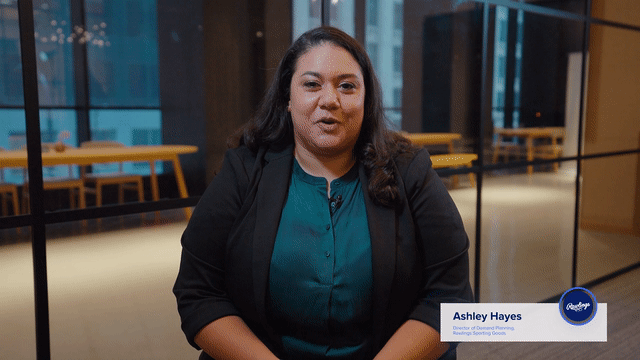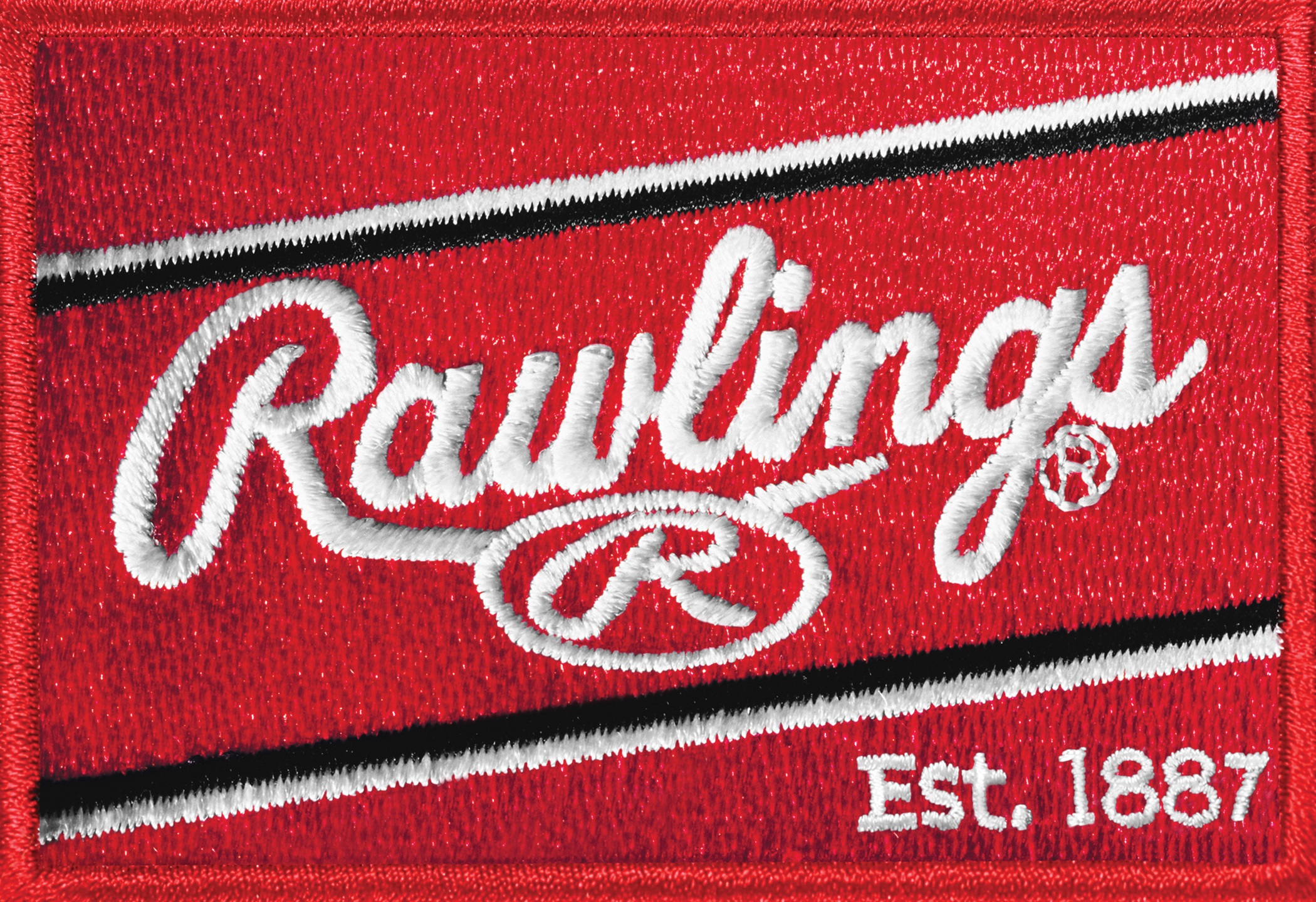
We're really able to get in the tool, develop something that is going to be game-changing for our team, as well as make huge impacts to our company's bottom line.— Ashley Hayes, Director of Sales and Inventory Planning, Rawlings
Zero
delay between plan changes and impact on the entire supply chain supports agility
Improved
forecast accuracy results in decreased excess inventory and boosts the bottom line
Flexibility
to modify the platform to improve functionality or adjust to changing needs
More sales channels, growth through acquisition, and changing customer behavior put baseball and softball equipment and apparel manufacturer Rawlings in a pickle. Implementing demand and supply planning with Anaplan set the company up to react quickly to changes — including demand spikes caused by social media influencers — decrease inventory, and boost the bottom line.
Baseball is changing and getting faster — pitch clock, anyone? — and Rawlings, established in 1887, is changing with it. The company acquired bat manufacturer Easton and several other brands in recent years, which doubled its SKU count into the tens of thousands and increased revenue by more than 40%. Rawlings has also become an omnichannel business, with product customization offerings, direct-to-consumer (DTC) sales, and 135+ retail pro shops at baseball and softball training centers in addition to its traditional in-store channels.
“Our biggest goals right now are integrating the brands and categories we've acquired into a holistic company and making sure we’re aligned on our corporate strategy,” says Ashley Hayes, Rawlings’ Director of Sales and Inventory Planning. With a hint of a grin, she adds: “And then there’s the influencers.”
Like most consumer products companies today, Rawlings must react to social media personalities whose endorsements can cause product demand to spike 10x or more — putting supply chain plans way off base. “We're navigating this new world and engaging with our customers so we can understand what demand will be down the line,” Hayes says.
Rawlings’ 20-year-old supply chain technology and processes weren’t able to play in today’s fast-paced big leagues, Hayes recalls. “It took days of work to pull our reports together, and every change involved an error-prone overnight process,” she says. “This left very little time to analyze the data and delayed our ability to adapt to changing trends.”
Building for the long game
Hayes and her team saw that integrated demand and supply planning would put Rawlings in a position to move faster and grow. They selected Anaplan, drafted Allitix for assistance, and focused first on demand planning, where Rawlings lacked consistent processes.
The Rawlings team designed standard operating procedures and process flows for demand planning, then implemented them in Anaplan so data flowed smoothly from step to step. “Our demand planning use case was deployed on time and on budget, which was really important to us,” Hayes recalls. “It went a lot faster than I anticipated, and Allitix was a huge part of that.”
“The Rawlings team came with a sharp vision of the capabilities and processes they wanted unlocked,” says Rola Shamieh Losco, Practice Director at Allitix. “The puzzle was there, we helped define the puzzle pieces to ensure relevancy and scalability. Automation scored quick wins, and the investment in a connected process will ensure long-term success.”
Throughout the deployment, the Rawlings team developed the Anaplan skills to manage and expand the finished product. “Because we were building a brand-new process, we sometimes wondered, ‘What if we’re wrong?’” Hayes recalls. “So the flexibility of Anaplan, and the ability to modify the platform ourselves, were my biggest deciding factors.”
Building on the core demand planning foundation, the team created additional demand planning functionality while also expanding the solution to include supply planning. Future enhancements include statistical modeling and SKU rationalization.
Moving fast for greater advantage
“The long-term impacts I see with Anaplan are increased forecast accuracy, which results in decreased excess inventory,” Hayes notes. “Anaplan enables us as a demand team to make sure we're managing our part of the bottom line.”
Supply chain updates and changes that formerly required overnight data updates can be made in real time with Anaplan. “We can see immediate recaps and roll ups, which is a huge win for us,” Hayes explains. “We can tweak and adjust the plan without making wholesale updates. The team can spend their time analyzing the data, making strategic choices, and getting the forecast as accurate as possible, instead of being data miners pulling spreadsheets together.”
This enables Hayes and her team respond to fast-moving trends and influencer demand spikes. “We're still learning about this, but Anaplan will be a huge help,” Hayes predicts — particularly for optimizing production when demand spikes occur. “We know the product mix our customers will want, so we can go into one cell and say ‘Increase production of this bat 500%.’ Anaplan will immediately generate the right mix lengths and weights so we can make the best moves in our supply chain.”
Game-changing improvements
Baseball and softball are steeped in tradition, and Hayes notes that Anaplan helps Rawlings support its traditional channels even as DTC and retail business lines grow. “The mom-and-pop sporting goods stores have kept us in business for almost 150 years,” she says. “We want them to be happy, even as consumers want customized products and want them faster. Accurate demand forecasting enables us to have inventory at the right place at the right time, even as we grow our own omnichannel business.”
Looking forward, Hayes is most stoked about the control she now has over Rawlings’ planning solution. “That was a probably the biggest surprise for me,” she notes. “One time my team said, ‘Hey, this dashboard is a pain point for us.’ It was a 30-minute fix on my part to present the data in a different way. We're really able to get in the tool, develop something that is going to be game-changing for our team, as well as make huge impacts to our company's bottom line.”
Ashley Hayes, Director of Demand Planning, Rawlings: Rawlings Sporting Goods is the leading manufacturer of baseball equipment around the world. We equip players from all levels and generations of play.
Planning is important as it really is the beginning of everything that happens to the company.
Before Anaplan, it was taking days if not weeks to pull our data. Now we're getting that overnight, which has a huge impact on our ability to do our jobs.
The team can spend their time analyzing the data, making strategic choices, and getting their forecast to be as accurate as possible instead of being data miners and just trying to pull spreadsheets together.
My favorite thing about Anaplan is our ability to make quick changes in the tool as needed. As our business is changing pretty consistently, we can have a quick conversation, work together as a team, and come up with a new dashboard or a new module. And that has been game changing.
The thing that excites me the most about our future with Anaplan is the ability to do very complex things much easier and much quicker than we had in the past. So now we're able to really get in the tool, develop something that's going to be game changing for our team as well as make huge impacts to our company's bottom line.
I am Ashley Hayes. I'm the Director of Demand Planning at Rawlings Sporting Goods, and we plan with Anaplan.



